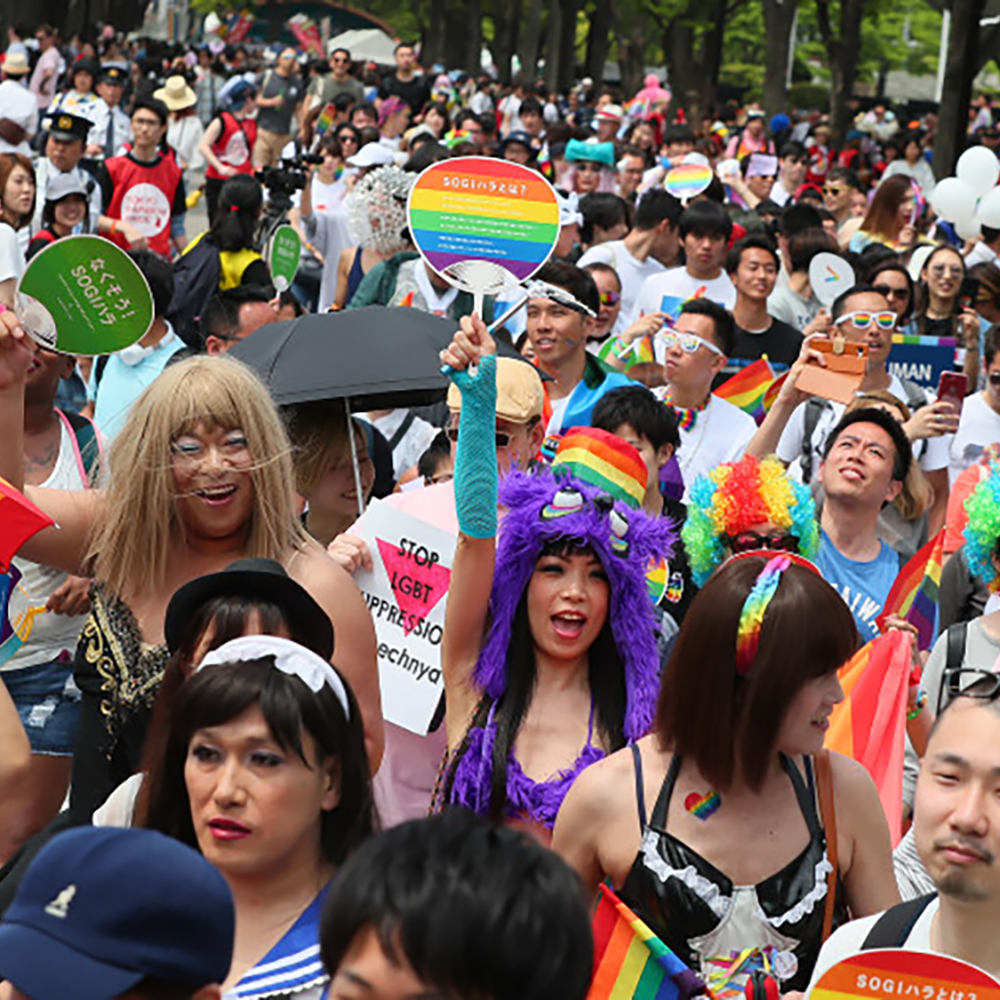
LGBTQIA+ people in Japan can’t settle for ribbons
The Japan Times | Editor: Ben Stubbings
Published: July 2018
On July 9, the city of Osaka will become the eighth municipality in Japan to issue documents recognizing same-sex partnerships. On the one hand, it’s tempting to interpret this action as a step towards equality. Partnership recognition is largely symbolic, but even incremental progress can lead to real change.
But these performative gestures often become impediments to equity, and the way in which such actions are acknowledged has a huge impact on more critical legislation: long overdue basic civil liberties like anti-discrimination policies, laws protecting and supporting transgender people, and same-sex marriage or civil unions.
When the first same-sex partnership in Japan was recognized in Shibuya in 2015, mayor Ken Hasebe called it “a first step.” So why, nearly three years later, are we still taking first steps?
Public opinion polls show that support for same-sex marriage has been steadily increasing in Japan, reaching a majority in 2015. That same year, a survey by the National Institute of Social Security and Population Studies in Japan reported that approximately 70 percent of those in their 20s approved of legal same-sex unions.
But even though Japan is ready for real change, it has yet to come — instead, we’re meant to react to decorative gestures like partnership recognition with gratitude. Until real change is achieved, LGBTQ+ people have no reason to be grateful.
It’s important to clarify what sort of “recognition” is being offered. Couples must both be over 20 years old and at least one individual must reside in the ward in which the application is being made. After satisfying these requirements, both parties sign a document and pay an application fee of ¥300.
In return, they are issued a document legally allowing them — but not entitling them — to share rental accommodation and visit one another in hospital. Whether or not institutions honour this document is entirely at their own discretion, with no repercussion save for the possibility of their decision being made public.
What’s more, this document is ward-specific. As soon as a recognized couple leaves the boundaries of the granting municipality, their certificate turns back into a pumpkin — or rather, a meaningless piece of paper.
Seen through the fairy dust, a partnership certificate seems less like a legal agreement and more like a participant ribbon given out at sports day. It’s a consolation prize designed to make the recipient feel appreciated at almost no expense to or effort from the donor.
Yes, partnership recognition has been hard-won thanks to the work of LGBTQ+ advocates and their allies, and such gestures can become important precedents for large-scale legislation, but they just as often become stalling tactics. When advocates accept but then later express dissatisfaction with these paltry offerings and continue to push for the civil rights they initially demanded for LGBTQ+ people, they are often labelled by both press and politicians as greedy, impatient or having an alternative agenda.
Any of these outcomes result in negative sentiment that can ultimately undercut the small progress made by weak legislation. With that in mind, it’s imperative that partnership certificates should be regarded as a step, not a destination.
I’ve seen the same one-step-forward, two-steps-back game play out in my home country of Canada. Same-sex marriage was legalized in 2005, but the right to marry is only a small part of LGBTQ+ equality. To be achieved, it must be inclusive and comprehensive.
As eyes turn towards Japan as it prepares to host the 2020 Olympics, its people have an opportunity to demonstrate their commitment to its key mandate: the promotion of a “peaceful society concerned with the preservation of human dignity.”
Can they come out winners? Sure. They just have to stop accepting participant ribbons.

